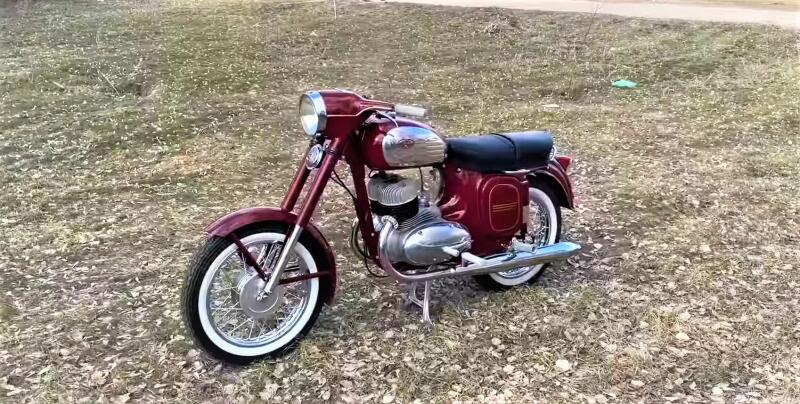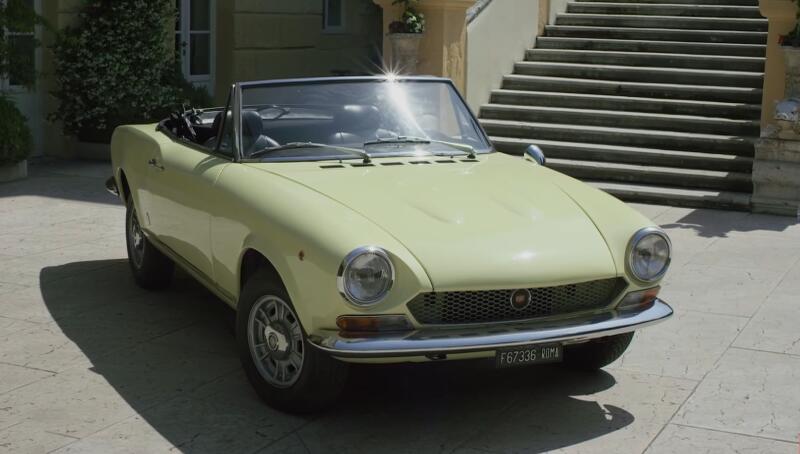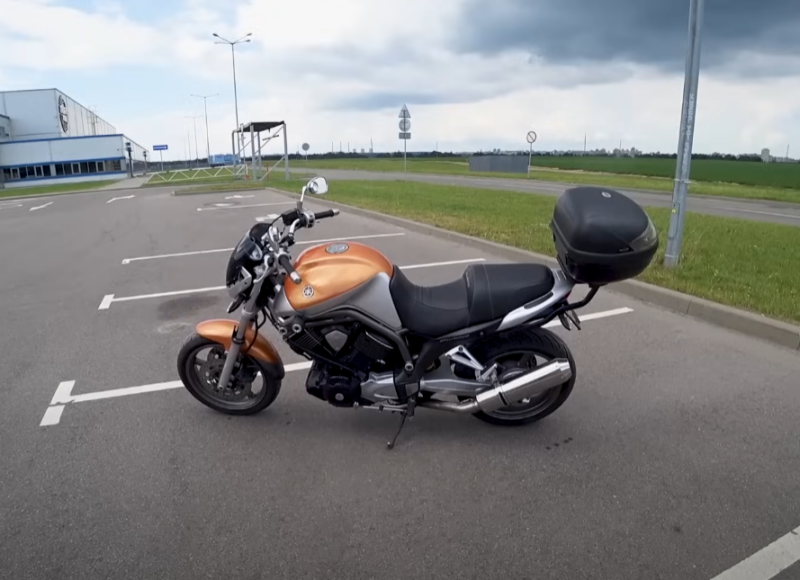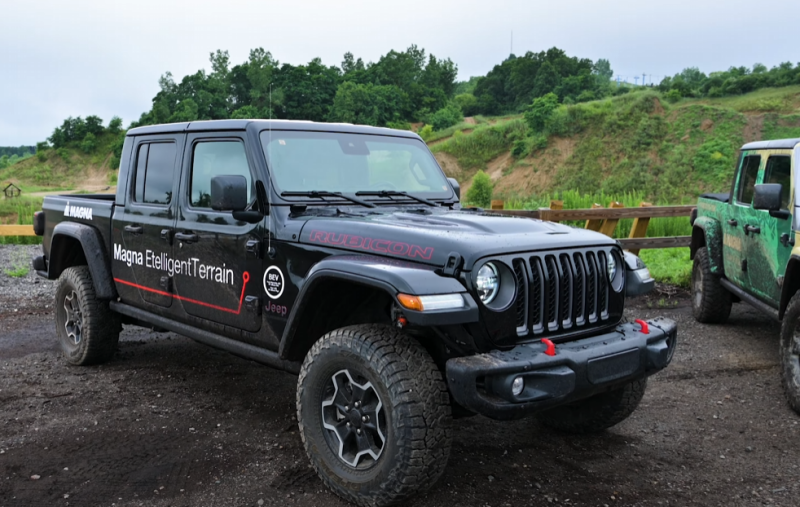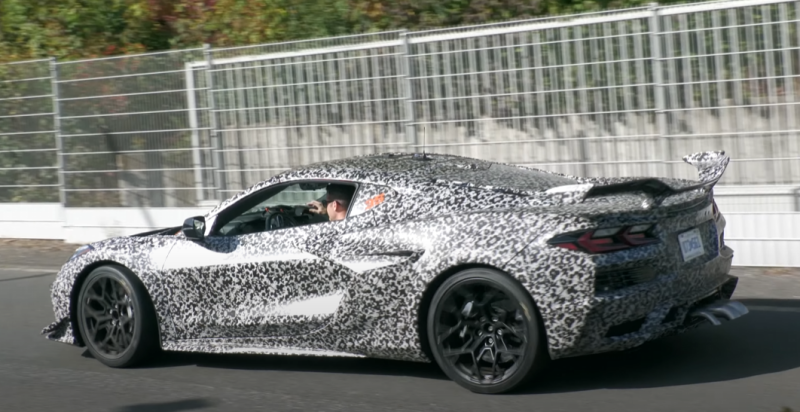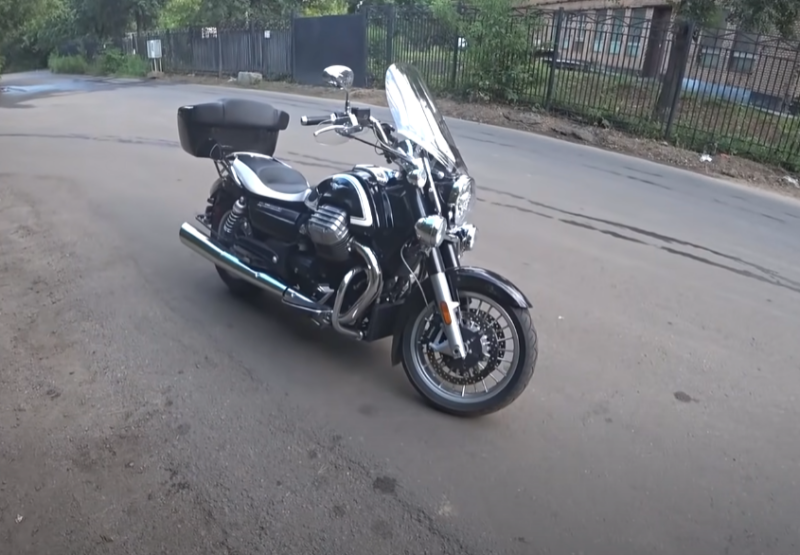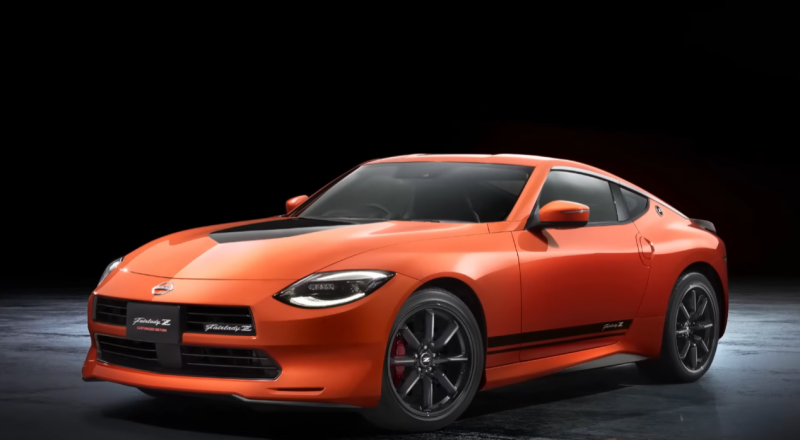But, let's not forget that the political situation in the country itself and in the world in general often has the strongest influence on the development and history of the model. Sometimes even if she shows up at all. In 1948, Czechoslovakia finally and irrevocably (for the next four decades) embarked on socialist rails. Of course, from that moment on, the Soviet state became the most important strategic partner of the country.
 Many considered this design the most successful. Photo: youtube.com
Many considered this design the most successful. Photo: youtube.comThis also affected trade relations. For the next decades, the Czechoslovak transport industry was provided with a large number of orders for the needs of the vast Soviet Union. In addition to trucks and locomotives, in the early 60s, the export of the popular Czechoslovak motorcycle brand JAWA began.
What a sweetheart "old lady" she is?
In the mid-50s, no one would have dared to call a motorcycle beautifully designed and shining with brand new paint an “old lady”. The first single-cylinder JAWA-250s were popularly nicknamed "chekushka", subtly hinting at its engine size. But later they were also joined by a two-cylinder modification already with a 350 cc engine. So the original nickname gradually faded away and the guys from the 80s didn’t even remember him. For its venerable age, the motorcycle received the nickname "old lady". The vast majority of such equipment accounted for 2-cylinder versions.
Since 1962, JAWA motorcycles have been delivered to our country. Unfortunately, it was no longer the hero of the Paris Perak showroom, but the next model of the factory. By tradition, its name echoed the design features (Perak - "springy", Kyvačka - "swinging").
Though it's not really worth regretting. After all, the power units remained almost the same, but the design has changed a lot. And if two models are placed side by side, then the conclusion is clear: Kyvačka is much cooler! And if emotions are expressed in dry facts, then we get the following:
✅ modern style like today's cruisers
✅ solid comfortable seat for two
✅ elegant and roomy "glove box"
✅ trendy deep wings
✅ streamlined motor block
A new model in two versions of the power unit appeared throughout the year: 1953 (250 cc) and 1954 (350 cc). Eight years later, updated modifications of these motorcycles came to the USSR. These are motorcycles with indexes "559" and "360". They were distinguished by a massive rectangular speedometer instead of a round one (in Czechoslovakia they were called "panels"). Very soon, “Javomania” began in our country, the fruit of which was the general enthusiasm of young people for Czechoslovak technology. Probably, there was no young man who did not dream of driving at least a little on an imported vehicle. And if this appeared in the family, then here it is happiness!
 The main difference was the type of power unit. Photo: youtube.com
The main difference was the type of power unit. Photo: youtube.comOne of the most distinctive features of this model was the original headlamp housing. He and other nice design elements have become the reason that many call the “old lady” the most beautiful of the JAWA line. Although I personally wouldn't agree with that. Still, the latest model of the Soviet period "638th" is more elegant and modern. Well, tastes differ.
New model device
Kyvačka had a frame similar to the previous model, made of rectangular tubes. The front suspension of the motorcycle has not changed too much. As for the rest, we are already dealing with significant changes. First of all, we note a different rear suspension (which gave the name to the motorcycle). The old system was replaced by a pendulum design with telescopic shock absorbers. Time has shown that it is her future. The undercarriage of the vehicle has also undergone a noticeable modernization.
Externally, the motorcycle was much closer to modern designs. Czechoslovak designers abandoned anachronistic lines in appearance, significantly updating it. Particularly stood out against this background were the seat-guitar and the headlight housing, which became a single ensemble with a drop-shaped tank. And, of course, stylish fishtail mufflers (in 1958 they were replaced by less noisy, cigar-shaped ones).
 There were many more 2-cylinder versions. Photo: youtube.com
There were many more 2-cylinder versions. Photo: youtube.comThese motorcycles were first introduced in 1953. True, prototypes could be seen before. Indeed, in those days, the manufacturers did not yet consider it necessary to keep everything a secret. Well, then industrial espionage was not so common. Two years later, due to an increase in the degree of compression, the engine power was increased to 16 hp. With. In November 1957, the installation of an M-series carburetor with a square float chamber began on a motorcycle.
The introduction of motorcycles of the 353 and 354 types was the result of a plan for a national series of Czechoslovak motorcycles. According to him, two manufacturers, Zavody 9 kvetna (JAWA) and Ceske zavody motocyklove (CZ), were to participate in the development of a motorcycle of a single design for all four volume classes.
Earlier, in the late 1940s, the production program was divided into volume classes between these two brands (the second received classes 125 and 150 cc, and JAWA - 250 and 350 cc). The primary reason was to prevent competition between them in the same class. However, in the early 60s, this idea was abandoned and CZ motorcycles began to be produced with the same engine sizes as JAWA (and share power units with them).
 Over time, such a speedometer was replaced with a rectangular one. Photo: youtube.com
Over time, such a speedometer was replaced with a rectangular one. Photo: youtube.comFrom October 1962, the updated JAWA-250 (type 559/02) and JAWA-350 (type 354/06) appeared. It was they who began to be supplied to the USSR. The Type 02 motorcycle had a significantly ported engine and increased power from the original 353/04, the engine for the 354/06 motorcycle remained virtually identical to the 354/04 engine. The change is the use of a paper microfilter in the original intake silencer and chassis identical to 559/02. Other changes included:
✅ redesigned front fork
✅ new speedometer and junction box
✅ reinforced frame (it was replaced by 360/00 in 1965)
The quality of the 353/354 series motorcycles is evidenced by a number of successful long-distance rides, often in the most difficult desert and tropical conditions. Traveler Vaclav Potuzhnik rode motorcycles 250/353/03 across India. The successful design confirms the huge commercial success at home and abroad, as well as the fact that many of these motorcycles are still in use half a century after the end of production. The car became a symbol of the word "motorcycle" in Czechoslovakia. She is no less legendary in our country.
Bulk deliveries to the USSR
The delight of the Soviet youth knew no bounds. A beautiful motorcycle with a foreign name, easily overcoming the “100” mark on the speedometer. In addition, with a fuel consumption of just over 3 l / 100 km. But this is not the main thing. It almost did not break, unlike the domestic motorcycle equipment of those times! All this brought Kyvačka all-Union fame and love.
 Motorcycles of this type replaced the Jawa Kyvačka. Photo: youtube.com
Motorcycles of this type replaced the Jawa Kyvačka. Photo: youtube.comMany Soviet children who lived near the Sporting Goods store dreamed of only one thing. They were waiting for a brand new JAWA to be taken out of the store for the next lucky person. At least look and immediately the day will become happier. Love for this Czechoslovak brand, 90% of whose products were supplied to the USSR, continued after the appearance of the transitional model "634". We call it "experimental". It was from that time that Kyvačka got its modern nickname - "old woman". But fame for these motorcycles did not come immediately. There was also a pre-war period of formation. We will talk about it in the next article in this series.
